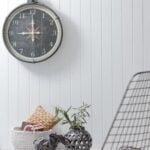How to decorate an older home is a skill that requires understanding and appreciation for the unique charm and character that comes with vintage and historical properties. From highlighting original features to incorporating modern elements, there are various ways to enhance the beauty of an older home while maintaining its authenticity.
Decorating an older home is not just about adding furniture and dcor; it’s about understanding the architectural style, preserving the original features, and creating a cohesive look that honors the history of the property. Embracing the aged elegance of a vintage home can be a rewarding experience, as it allows homeowners to create a space that exudes timeless charm and character.
In this article, we will explore the intricacies of decorating an older home, from understanding the architectural style to selecting the right color palette, choosing furniture and dcor, mixing antiques with contemporary pieces, and adding personal touches. By the end of this guide, you will have valuable insights on how to bring out the best in your older home while infusing it with your unique style and personality.
Understanding the Architectural Style of Your Older Home
When decorating an older home, it is important to first understand the architectural style of the property. Whether it is a Victorian, Craftsman, Colonial, or Mid-century modern home, each architectural style has its own unique features and characteristics that can guide your decorating choices. Start by researching the history of your home and its architectural style to gain a deeper understanding of its roots and design elements.
Once you have a good grasp of the architectural style, take a walk around your home to identify any original features that are worth preserving and highlighting. This could include crown molding, built-in shelving, vintage light fixtures, or original hardwood floors. Embracing these original elements can help maintain the authenticity and charm of your older home while also serving as focal points in your decorating scheme.
In addition to understanding the architectural style and preserving original features, it is also important to consider any renovations or additions that may have been made over the years. Determine if these changes align with the original style of the home and decide whether they should be incorporated into your decorating plans or if they need to be modified to better fit the overall aesthetic.
By understanding and honoring the architectural style of your older home, you can create a cohesive and harmonious decor that celebrates its rich history.
Embracing the Original Features
One of the most important aspects of decorating an older home is embracing and preserving its original features. These features are what give an older home its unique charm and character, and they should be celebrated and highlighted as much as possible. Whether it’s intricate moldings, hardwood floors, or original fireplaces, these elements are a reflection of the history and craftsmanship of the home.
Preserving these original features often involves careful restoration and maintenance. This may include repairing damaged woodwork, refinishing floors, or restoring historic details that have been covered up or removed over the years. Hiring professionals who specialize in historic preservation can be essential in this process to ensure that these features are properly cared for.
Highlighting these original features in your decor can also help to create a cohesive look that feels true to the era in which your home was built. By choosing furniture and decor that complements these elements rather than competes with them, you can create a space that feels harmonious and timeless. Additionally, incorporating modern elements thoughtfully can help to highlight the juxtaposition between old and new, adding layers of interest to your space.
| Original Features | Preservation |
|---|---|
| Intricate Molding | Restoration and Maintenance |
| Hardwood Floors | Refinishing |
| Original Fireplaces | Repair and Restoration |
Incorporating Modern Elements While Maintaining the Vintage Feel
When decorating an older home, finding the balance between modern elements and vintage feel is crucial. While it’s important to preserve the original features of the home, adding modern touches can create a harmonious blend of old and new.
One way to achieve this is by incorporating technology into the home without compromising its classic look. For example, you can install smart lighting that can be controlled through your phone, or integrate a sound system that is discreet and minimally invasive.
Another way to introduce modern elements while maintaining a vintage feel is by updating fixtures and hardware. Replacing dated knobs and handles with sleeker, contemporary designs can give the home an updated look without sacrificing its old-world charm. Additionally, modernizing appliances in the kitchen while keeping the original cabinetry can be an effective way to achieve a balance between old and new.
It’s also important to consider the flooring when incorporating modern elements into an older home. Hardwood floors are a classic feature in older homes, but they can be complemented with area rugs that have modern patterns or textures. This allows for a seamless integration of both vintage and contemporary styles throughout the space.
| Decorating Tips for Older Homes | Details |
|---|---|
| Incorporate technology without compromising vintage feel | Install smart lighting and sound systems |
| Update fixtures and hardware | Replace dated knobs and handles with contemporary designs |
| Consider flooring options | Use area rugs with modern patterns on classic hardwood floors |
Selecting the Right Color Palette for an Older Home
When it comes to decorating an older home, selecting the right color palette is crucial in maintaining its vintage charm while also adding a modern touch. The colors you choose can either enhance or detract from the original features and architectural style of your home. Here are some tips for selecting the right color palette for an older home:
- Research the historical color palettes: Before choosing any colors, research the historical color palettes that were popular during the time your home was built. This can give you insight into the colors that were typically used and can help guide your choices.
- Consider the architecture: Take into account the architectural style of your home when selecting colors. For example, Victorian homes often feature elaborate details and may be complemented by rich, deep hues, while a mid-century modern home may be better suited to a more subdued and earthy color palette.
- Highlight unique features: Use color to highlight unique architectural features of your older home. Consider using a contrasting color to make features such as trim, crown molding, or window casings stand out.
By carefully considering historical color palettes, taking into account the architectural style of your home, and using color to highlight unique features, you can select a color palette that enhances the beauty and character of your older home while still adding a modern touch. Remember, when in doubt, consulting with a professional interior designer or decorator can provide valuable insight and guidance in selecting the right color palette for your older home.
Choosing Furniture and Décor That Complement the Age of the Home
When decorating an older home, it’s important to select furniture and dcor that complement the age and architectural style of the property. Doing so will not only enhance the overall aesthetic but also create a cohesive and harmonious look throughout the space. Here are some tips for choosing the right furniture and dcor for an older home:
- Research the historical period of your home: Before selecting furniture and dcor, take some time to research the historical period in which your home was built. This will give you valuable insight into the design styles and influences that were prominent during that time.
- Opt for vintage or antique pieces: Incorporating vintage or antique furniture and dcor items can add authenticity to your older home’s interior. Look for pieces that resonate with the era of your home, such as Victorian armchairs, mid-century modern sideboards, or art deco mirrors.
- Consider architectural details: Take into account the architectural details of your home when choosing furniture and dcor. For instance, if your home features intricate woodwork, ornate moldings, or high ceilings, opt for furniture and dcor that complements these features.
By carefully selecting furniture and dcor that align with the age and style of your older home, you can create a unique and charming interior that pays homage to its rich history.
Mixing Antiques With Contemporary Pieces for a Timeless Look
When it comes to decorating an older home, one of the key elements to creating a timeless look is the art of mixing antiques with contemporary pieces. This juxtaposition of old and new can add depth, character, and interest to your living space while preserving the historical charm of the property.
Striking the Right Balance
Finding the right balance between antique and contemporary pieces is essential. Too much of one or the other can make your space feel either outdated or cold and uninviting. Consider integrating statement antique furniture pieces such as a vintage chandelier, a classic sideboard, or a beautiful ornate mirror with sleek modern furnishings like a minimalist sofa or a glass coffee table.
Creating Visual Interest
Mixing antiques with contemporary pieces not only creates a timeless look but also adds visual interest to your home. The contrast between old and new can create a sense of depth and intrigue in your decor. For example, placing antique art or sculptures on clean-lined shelves or pairing an antique rug with modern furniture can create a striking visual impact.
Preserving History While Embracing Modernity
By incorporating both antique and contemporary elements into your home decor, you can pay homage to the history and architectural style of your older home while still embracing modernity. This blend of old and new will help you create a comfortable, inviting atmosphere that feels both familiar and fresh at the same time.
Adding Personal Touches and Character to Your Older Home
Embrace the History
When decorating an older home, it’s important to embrace the history and character of the space. Consider incorporating elements that reflect the time period in which the home was built. This could mean adding vintage fixtures, using traditional materials, or displaying historical artifacts. By honoring the history of the home, you can add a sense of authenticity and charm to your decor.
Showcase Unique Features
One of the perks of decorating an older home is the unique architectural features it may possess. Whether it’s original hardwood floors, intricate molding, or a charming built-in bookcase, these features are what make older homes special. Showcase these elements by keeping them clean and well-maintained, and use them as focal points in your design. Highlighting these unique features will add character and personality to your home.
Add Personal Artifacts
To truly make your older home feel like your own, consider adding personal artifacts and mementos throughout the space. This could include family heirlooms, travel souvenirs, or artwork that holds sentimental value. These personal touches not only add character to your home but also create a sense of warmth and comfort. By infusing your personal style into the decor, you can create a space that feels uniquely yours while still honoring the history of the home.
Final Touches
In conclusion, decorating an older home can be a delightful and rewarding experience. By understanding the architectural style of your home and embracing its original features, you can highlight and preserve its unique charm. Incorporating modern elements while maintaining the vintage feel will ensure that your home feels both timeless and up-to-date.
Selecting the right color palette for an older home is crucial in creating a cohesive and harmonious look. By choosing colors that complement the age and style of the home, you can enhance its character and beauty.
When it comes to furniture and décor, opting for pieces that align with the era of the home can help create a cohesive design scheme. Mixing antiques with contemporary pieces can add depth and interest to your interior, resulting in a timeless look that reflects both the past and present.
Finally, paying attention to final touches such as lighting, window treatments, and accessories is essential for completing the look of your older home. Thoughtfully selected lighting fixtures, window coverings, and decorative accessories can further enhance the atmosphere of your space while adding personal touches that reflect your unique style.
With careful consideration and a focus on preserving the history and character of your older home, you can create a beautiful living space that honors its heritage while providing all the comforts of modern living.
Frequently Asked Questions
How Can I Make My Old House Look Good?
Making an old house look good can involve a variety of improvements, such as freshening up the exterior with a new coat of paint, landscaping, and repairing any visible damage. Inside, updating fixtures, lighting, and paint can make a big difference. Decluttering and rearranging furniture can also help to modernize the interior of an older home.
How to Update a 50 Year Old House?
Updating a 50 year old house involves addressing both aesthetic and functional aspects. This could include replacing outdated appliances, refinishing or replacing worn flooring, updating the kitchen and bathrooms, and modernizing the color scheme with fresh paint or wallpaper. It’s also important to consider energy-efficient upgrades like insulation and windows to improve the overall efficiency of the home.
What Should I Fix First in My Old House?
When deciding what to fix first in an old house, it’s crucial to prioritize any structural issues such as roof leaks or foundation problems. Ensuring that the home is safe and stable should be the first concern before moving on to cosmetic updates.
Next, consider upgrading electrical systems, plumbing, and HVAC if they are outdated or not functioning properly. From there, focus on aesthetic improvements like painting, flooring updates, and kitchen/bathroom renovations to enhance the overall look and feel of the home.

I’m thrilled to be your companion on this exciting journey through the world of home decor and design. With a passion for turning houses into homes and a keen eye for the finer details, I’m here to help you transform your living spaces into beautiful, functional, and meaningful havens.





